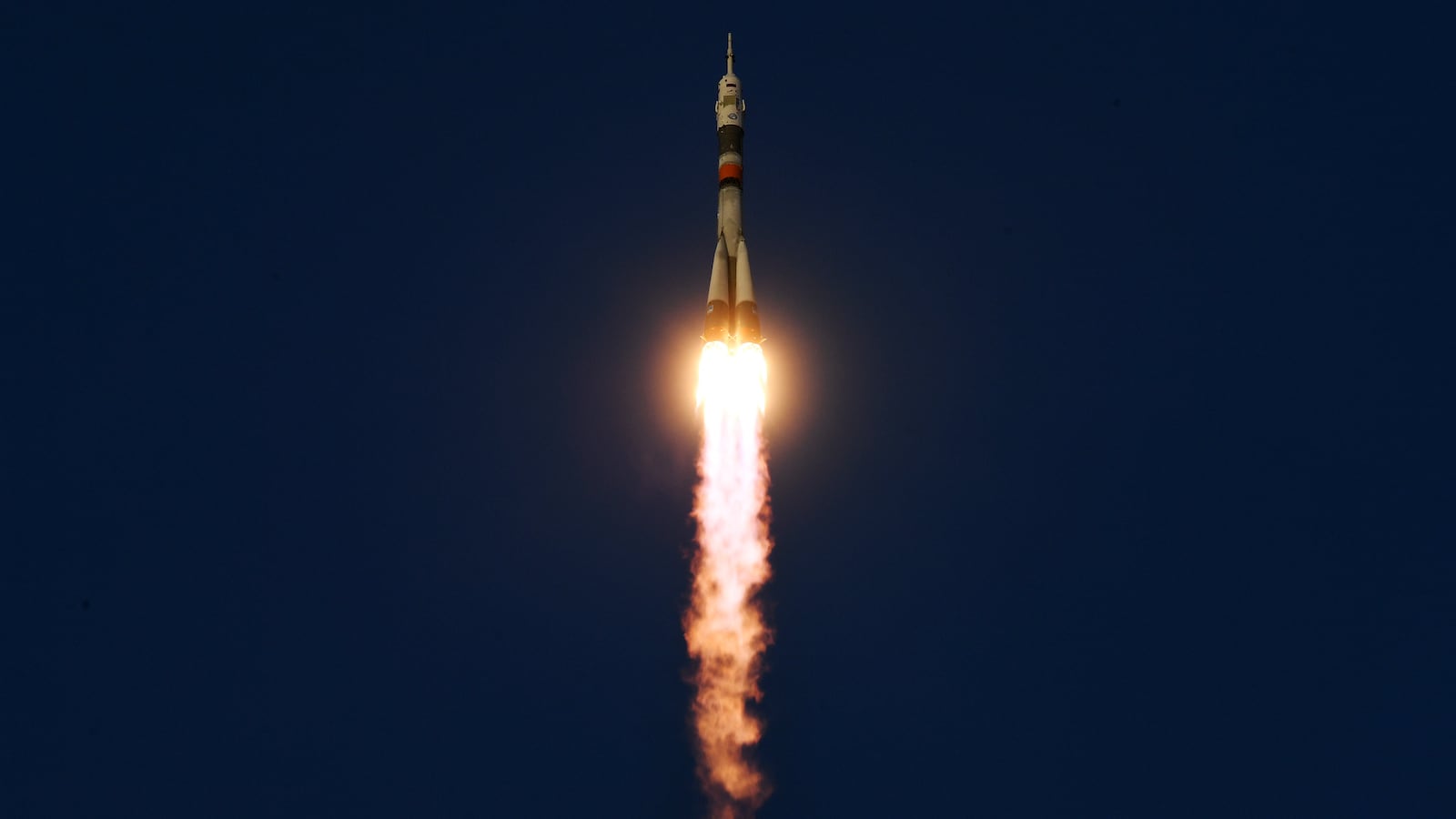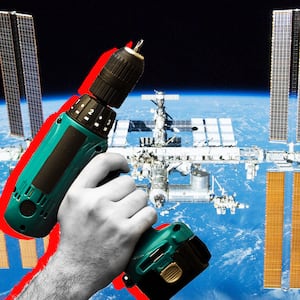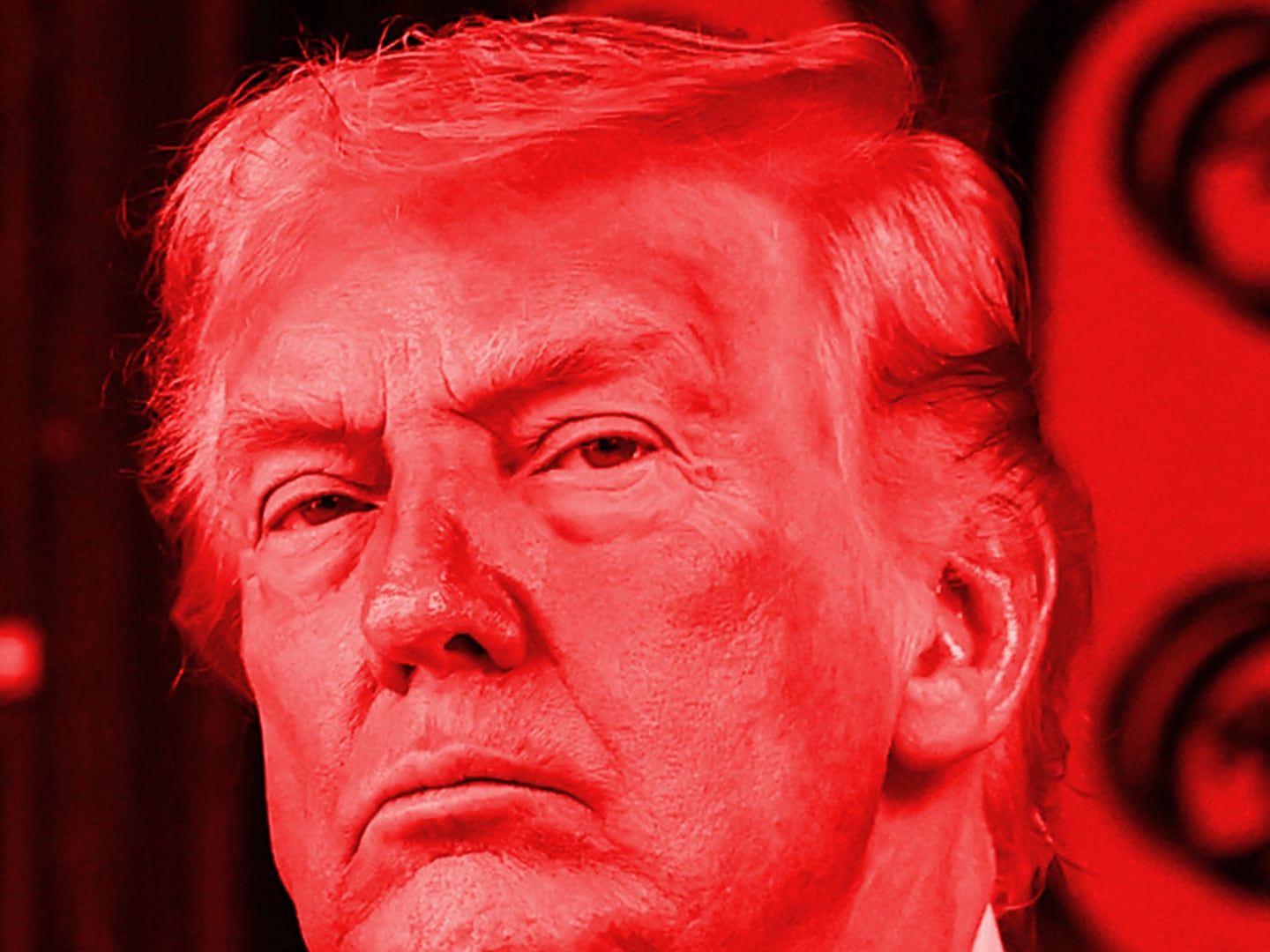A space capsule with a hole in it. A rocket that failed 31 miles over Earth’s surface. An orbital lab with misfiring thrusters.
That’s the short list of the most dramatic mishaps involving the International Space Station in the last three years. The missteps have one thing in common: They all involve Russian spacecraft traveling to, or already attached to, the station—or station modules that recently arrived from Earth.
There was a time, 60 years ago, when the Soviet Union was the world’s indisputable leader in space. The USSR had the first space probes, the most ingenious manned spacecraft, and the luckiest astronauts—er, “cosmonauts.”
Today, the Soviet Union is no more. Russia inherited most of the old Soviet space infrastructure—including what became the Roscosmos space agency—but Moscow has struggled to maintain it.
Far from being a leader in space, Russia is quickly becoming a liability, several experts told The Daily Beast.
That has serious implications not just for an increasingly isolated, militaristic Russia, but also for all the countries that work with Russia in orbit, especially on the International Space Station. The United States, for one, might cut Roscosmos loose as it organizes ambitious new manned missions to the moon and maybe eventually Mars.
The Russians “have a worse record than any other major space power,” David Burbach, a space expert at the U.S. Naval War College in Rhode Island, told The Daily Beast. “China landed a rover on Mars on its first try, while every Russian attempt to reach Mars since 1990 has failed.”
With every year that passes, NASA has more options for productive and safe space partnerships. With every year that passes, it needs—and probably trusts—Roscosmos less and less.
“The competition has become much stronger—SpaceX, but also other Western firms and China’s improving rockets—and Russia seems likely to keep losing market share if it can’t improve its product,” Burbach said.
The most recent Russian space mishap was arguably the most dramatic. On July 29, a Russian Proton rocket blasted off from Baikonur spaceport in Kazakhstan, a new science lab attached to its top.
The long overdue Nauka lab—that’s Russian for “science”—safely docked with the International Space Station. For a while, everything seemed fine aboard the 22-year-old station, which currently houses seven crew: three Americans, two Russians, and one member each from the European and Japanese space agencies.
Generally speaking, the NASA astronauts command the ISS and conduct science experiments. The visiting Europeans and Japanese are usually scientists. Roscosmos meanwhile sends skilled cosmonauts to maintain the station’s hardware.
There are actually two separate “neighborhoods” in the ISS. One for the Russians. Another for everyone else.
A few hours after docking last week, Nauka abruptly—and totally on its own—fired its maneuvering rockets. The malfunction set the 356-foot station spinning around its axis, 250 miles above Earth. NASA controllers on the ground in Houston were powerless to intervene. Only controllers in Russia had access to Nauka’s remote controls.
But the radio link required a direct line of sight. It was half an hour before the ISS’s orbit took it over Russia, and Roscosmos could turn off the thrusters. “Yeehaw!” tweeted Zebulon Scoville, the flight director in Houston. “That. Was. A. Day.”
NASA at first announced that the ISS spun just 45 degrees before the Russians regained control. Five days later, NASA admitted it was wrong. In fact, in its half-hour spin, the thin-skinned station—which is festooned with modules, solar panels, and heat-venting radiators—rotated 540 degrees, in essence turning around one and a half times.
To restore the station to its normal position, NASA turned on thrusters for another half-turn. “Station is in good shape and operating normally,” NASA tweeted. The space agency did not immediately respond to a request for comment.
NASA told Space.com the ISS crew was never in danger. But Scoville tweeted that he’d never “been so happy to see all solar arrays and radiators still attached.”
Maybe the ISS was in no danger of disintegrating. But NASA and Roscosmos are lucky the station didn’t suffer extensive—and expensive—damage to vital systems. Roscosmos did not respond to a request for comment.
Worse, the July mishap is just the most recent screwup for Roscosmos. Most famously, back in August 2018, a Russian Soyuz capsule,which helps shuttle people and supplies to the station,somehow escaped the attention of Roscosmos quality-controls and arrived at the ISS with a 2-millimeter-diameter hole in it.
Once the Soyuz docked with the ISS, it began sharing the ISS’s breathable atmosphere … and started slowly venting that atmosphere into space.
Controllers in Houston and Moscow eventually noticed the drop in air pressure and sent the station crew on a hunt for the source. The crew patched the capsule and sent it back down to Earth.
Inspections turned up chilling details. “There were several attempts at drilling,” Dmitry Rogozin, the controversial head of Roscosmos space agency, said in televised comments. “What is this: a production defect or some premeditated actions?”
A separate Soyuz was involved in another close call two months later. A sensor malfunctioned on the rocket boosting two ISS crew—an American and a Russian—toward the station. The rocket failed. The capsule containing the passengers ejected at an altitude of 31 miles and parachuted safely back down to Kazakhstan.
A year later, Roscosmos had completed its investigation of the hole on the first Soyuz. But the Russians refused to say publicly what they found out. “We know exactly what happened, but we will not tell you anything,” Rogozin reportedly said at a science conference for kids in September 2019.
In the meantime, NASA and Roscosmos detected another slow air leak aboard the ISS. Efforts by the crew in late 2020 narrowed the location of the leak down to, you guessed it, one of two Russian-made modules.
If you’re sensing a trend, you’re not wrong.
When properly assembled and operated, the Soyuz is perhaps the safest spacecraft ever. But it’s not hard to conclude that Roscosmos can’t be trusted to build and run the cone-shaped craft.
As for newer Russian space hardware such as Nauka … it’s as often as not badly designed, badly built and badly run. “The pattern of poor quality control in new hardware in the Russian space program has been around for many years,” John Logsdon, a professor emeritus at George Washington University’s Space Policy Institute, told The Daily Beast.
To be clear, space travel is hard and risky. NASA knows this all too well. The Space Shuttle, which NASA decommissioned back in 2011, was actually the most dangerous spacecraft ever. The bulky, fragile space-plane’s two fatal crashes in 1986 and 2003 accounted for 14 of the 19 fatalities that have occurred during space missions since 1961.
The world’s space agencies are eager to avoid adding to this grim figure, which helps to explain why relations between NASA and Roscosmos have gotten chillier.
The Russians used to enjoy a reputation for building old-fashioned, but rugged and safe, space tech. Today that tech is no less old-fashioned—the Soyuz capsule has been in use since 1966—but a lot of it’s also looking less and less safe.
Pavel Luzin, an independent expert on the Russian military and space program, has a theory. “There is a huge problem with human capital,” he told The Daily Beast. “Most people who worked during the Soviet and early post-Soviet times and knew how the Soviet technologies really worked—with all their pitfalls—are retired.”
“The new generations of engineers and workers suffer from the personnel turnover,” he added. “Young professionals prefer not to stay too long within the Russian space industry because of over-regulation and lack of salaries. Even if they work according to all the instructions, they just don’t know the pitfalls.”
A lack of money is the toxic thread weaving through Roscosmos’s problems. For a decade between the Space Shuttle’s retirement and the introduction of new American capsules, Roscosmos earned billions of dollars renting rides to the ISS on its Soyuz capsules.
The importance of those rentals belied the Russian space program’s funding problems. “Since the fall of the Soviet Union, the Russian space program has been chronically underfunded,” Chris Impey, a University of Arizona astronomer, told The Daily Beast.
It’s also possible Roscosmos, and specifically Rogozin, is a bit ... distracted. By movies, of all things.
In a surprise move in May 2020, NASA announced a plan to send actor Tom Cruise and director Doug Liman to the ISS to shoot a movie. “We need popular media to inspire a new generation of engineers and scientists,” tweeted Jim Bridenstine, the NASA administrator at the time.
But the Russians are determined to get there first with their own movie. Shortly after Bridenstine’s announcement, Rogozin threw together his own plan to send actress Yulia Peresild and director Klim Shepenko to the ISS to shoot a thriller that Rogozin would co-produce.
That production is scheduled to kick off in October, right before Cruise and Liman arrive. Rogozin’s fixation on making a movie in space, and doing it first, was reportedly the final straw for Sergei Krikalyov, a famous former cosmonaut who was working under Rogozin at Roscosmos but objected to his boss’ filmmaking ambitions.
So Rogozin demoted him, according to the newspaper Novaya Gazeta. If Rogozin is worried about the safety and reliability of his spacecraft, he’s certainly not showing it. But if the reporting is accurate, he’s not shy about punishing dissent.
NASA needs Roscosmos on the ISS. The Russians effectively own half of the station and still provide vital services to the other half. But the ISS won’t last forever. The Biden administration wants to extend the aging station out to 2030 before turning it over to private operators.
After that, NASA plans to shift its attention to a new station, the Lunar Gateway, which would fly around the moon in a wide orbit that would allow it to both support a new generation of lunar explorers and function as a staging base for a possible future mission to Mars.
NASA is enlisting the usual foreign space agencies to help out with Lunar Gateway—with one big possible exception. It’s looking likelier that Roscosmos won’t be aboard.
It’s not that NASA wouldn’t love to keep working with the Russians, all things being equal. It’s one of the rare areas where Washington and Moscow aren’t rivals. “We are partners in space, and I don’t want that to cease,” NASA administrator Bill Nelson said following a June meeting with Rogozin.
But the sad state of affairs at the Russian agency, and Rogozin’s refusal to admit there are problems and fix them, might force Nelson’s hand. “Going forward the stresses in the partnership suggest that it will not last in coming years,” Logsdon said.
And even if the Russians do join the moon station, they won’t occupy half of it like they do on the ISS. “If Russian hardware isn’t reliable, or even safe, that probably reduces their leverage,” Burbach said.
It’s not just that U.S.-Russian relations are fraying as Russia descends deeper into authoritarianism, invades its neighbors, and interferes in foreign elections. For the United States, breaking up with Russia in space is also a matter of safety.








